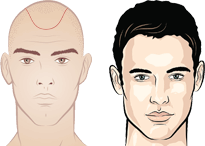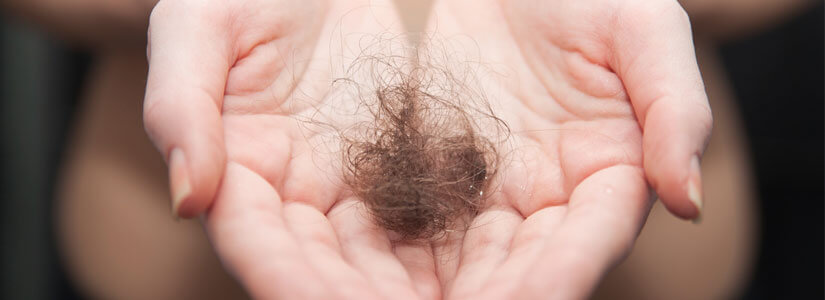There are different parts of the scalp where hair loss can occur but the crown is the most common area where people initially start losing hair. If you have lost hair in the crown area, our crown hair transplant can restore hair growth naturally. This page discusses cost, benefits, side effects, procedure, and risks of this innovative procedure.
Contents
Benefits
A well-planned and carefully performed hair transplant can deliver promising results. Moreover, patients can continue to see promising results during the entire crown hair transplant timeline. It is also important for the patient to take proper care after having this surgery.
- This surgery results in natural-looking hair.
- The hair will keep growing for a long time.
- We want to make it easy for people to take this treatment and that is why we have set a reasonable rate.
- The treatment is mildly surgical and minimally invasive.
- Areas other than crown can also have it to restore hair growth.
FAQs For Crown Hair Transplant
The crown is the posterior part of the scalp. It is one of the most affected areas in terms of hair loss. However, with the help of crown hair transplant baldness and hair loss in the crown region can be treated. Usually, experts recommend about 800 to 1200 healthy grafts for crown hair transplant. It is important to keep this number minimal because there is only a limited number of grafts available in one individual. In a crown hair transplant, the density means a balanced distribution of grafts across the crown. When grafts are transplanted carefully, they provide the maximum density and aesthetic appeal. Moreover, it's important to use grafts efficiently because they are finite.What is crown hair?
How many grafts are required for graft for a crown?
What is hair transplant crown density?
Candidates
Most men qualify as a good candidate but not every woman can take it.
- A man with pattern baldness
- A woman with thinning hair problem
- Anyone having good mental and physical health
- Anyone who have lost hair due to burn or injury
- Anyone who have lost hair due to chemotherapy
- Anyone having realistic expectations with the treatment outcomes
Side Effects
All surgical treatments come with some minor or major side effects that can last for a short or long time. The people who undergo this hair restoration procedure get some minor and temporary side effects.
Please note that there are no major risks associated with this surgery if your doctor is an expert and you take proper care. You can expect the following side effects:
- Slight swelling can occur on the scalp
- Minor itchiness can occur on the scalp
- Some bleeding can occur after surgery
- Minor bruising can occur around the eyes
- Formation of crust on the scalp is also common
Procedure
The procedure is similar to a typical hair transplant. The treatment can be divided into different steps but these steps can be different for different hair transplant techniques such as follicular unit extraction (FUE) and follicular unit transplantation (FUT).
According to WebMD, the procedure can take four to eight hours to finish. Let’s see how FUE hair transplant is normally performed:
Step 1 – Donor Area Preparation: The professional will clean the donor area before shaving it. Now local anesthesia will be administered to avoid pain and discomfort during the procedure.
Step 2 – Hair Graft Extraction: Now the actual treatment will start and the surgeon will extract hair grafts from the donor area to start the procedure. Unlike FUT, a strip of hair is not removed.
Step 3 – Hair Grafts Preparation: Now hair grafts that were extracted in the previous step, will be prepared to enable them to be inserted into the destination area.
Step 4 – Recipient Site Preparation: It is now time to prepare the site that needs to regrow hair. The surgeon will first administer local anesthesia (to numb the area) and then make tiny incisions.
Step 5 – Hair Graft Transplantation: In the last step, the surgeon will insert hair grafts in a tiny incision made at the crown area or any other recipient site. Now doctor concludes the treatment.
Crown Hair Transplant Before and After
View Gallery for before and after images
Our Specialist Doctors
Pre-OP Care
The patient should take proper care even before undergoing this procedure. The followings should be done regularly:
- Keep taking the medications prescribed by your doctor.
- Stop taking blood-thinners, smoking cigarettes, and drinking alcohols.
Aftercare
As donor and recipient areas get hurt during the surgery, it is important to take proper care to recover quickly. Aftercare normally includes the followings:
- Sleep in the upright position for the first two nights.
- Avoid smoking, drinking, and taking blood-thinners.
- Do not touch, rub, or put pressure on the treated areas.
Cost
Hair transplant is a cosmetic treatment that is personalized to meet an individual’s demands. That is why crown hair transplant cost in Dubai varies from person to person.
In case you have a medical insurance plan, check with the provider as most health insurance policies do not cover cosmetic treatments.
The rate depends on different factors including but not limited to the following:
Cost Factors:
- Provider’s geographic location
- Required number of hair grafts
- Surgeon’s expertise and reputation
- Hair transplant technique to be used
Please contact us anytime to know how much we will charge from you.
Is it for You?
If you have lost crown area hair and want to restore hair growth naturally, you should try our latest crown hair transplant in Dubai.
Consult an Expert
One of our hair restoration experts would love to guide further if you have any questions.
You can call us or fill our online form now to book a consultation session with a surgeon.








